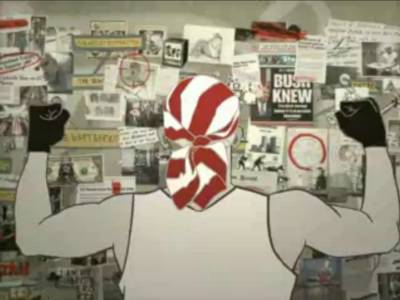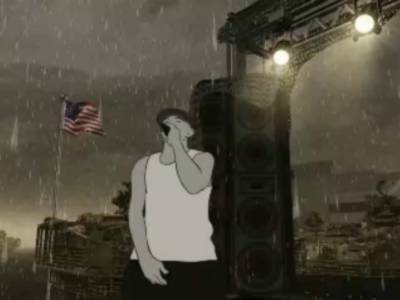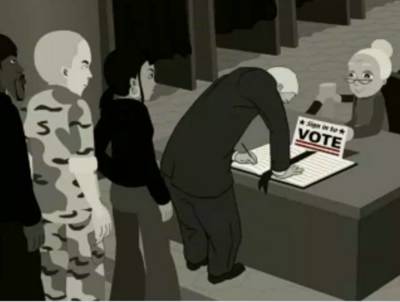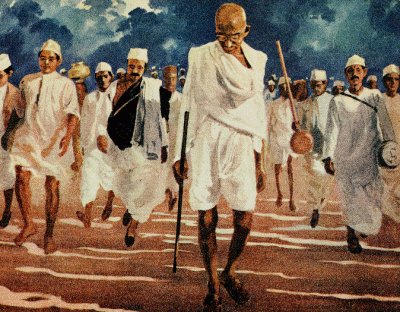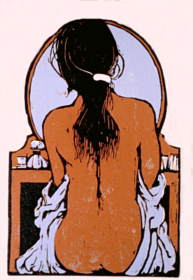
When
Takashi Shimizu made Ju-On, he had a certain kind of viewer in mind - the kind who's grown up in a culture of fear, hearing grandmother's tales of haunted houses, ghosts whose feet are turned backward, and who is able to apply a willing suspension of disbelief easily enough to a tale of a house that is cursed in a way that any visitor becomes part of the curse. This is believable in the Asian cultural setting where almost everyone has heard of someone who knows a house where some terrible things happened.
The Japanese believe that they are surrounded by spirits all the time. According to the Japanese Shinto faith, after death a human being becomes a spirit or deity. They believe that after death a spirit is angry and impure. Many rituals are performed for seven years to purify and pacify the soul.
An example of a famous Japanese ghost legend is that of
Kuzunoha. In Japan, the fox was believed to have the power of transforming itself into a human.
Kuzunoha took the form of a woman in order to marry a man who had saved her life in the Shinoda woods. She bore her husband a child, but one day the man saw her while in her fox form. Thus, she had to return to her life in the woods, after bidding an affectionate farewell to her child.

On the other hand, modern American sensibilities are enthused by other fears - of masked men carrying guns, of
the death of Social Security, and of the stranger among us. An alternate stream of American fear is induced by
premillenarism, which did not end with Y2K, but rather is about the fear that lies around the corner, the Day After Tomorrow, as it were.
Thus, American fear is about the uncertainty of the future, whereas the Asian or Japanese fear is induced by fears from past events and a horror within. American fear is assuaged by the hope of safety in the state, the church, or rapture. ( The doctrine of a secret rapture was first conceived by
John Nelson Darby of the Plymouth Brethren in 1827.)
A good example of American fear is at
The Yale Journal for
Humanities in Medicine
Fear, some might say, is all around us. From academics who tell us that we are living in a culture of fear to government departments that alert us to colour-coded levels of terror, fear has grown into a cultural and political obsession, with the "war on terror" its most ubiquitous manifestation.
--------------------
1. Fear of God:
--------------------
2. The Fear of Fear
--------------------
3. The Fear of the Other
---------------------------
Japanese culture has a different focus. In Japan, 'abunai'(danger) and 'gochui'(caution) are very common words -
found everywhere.
Perhaps the greatest source of my anxiety stems from the images themselves. Victims are depicted as little pigs in private school uniforms or young helpless women. Criminals are cartoon foxes bursting out of magical clouds, black knife-wielding blobs or angry speeding buses. I am further troubled by figures of authority that are represented by little boys in baseball caps and frogs in suits.
---------------------------
As a foreigner startled by the scare tactics used in the public sphere, I wonder how living in a 'culture of fear' affects its citizens. Most people I asked found nothing odd about the cartoon images committing gruesome crimes and acts of grave negligence.
---------------------------
The constant refrain of 'terror warnings' seem a far cry from such a culture. A lot of the Japanese fear arises from the very violent historical record of the Japanese peoples, with waves of subjugation and misguided rulers. Other factors include the cramped conditions, the feeling of spiritlessness induced by a fast, fragmented life, and a sustained half-generation long economic slack.
No wonder horror films of a certain type do exceedingly well in Japan. The success of
Ringu, with the vengeful spirit Sadako crawling out of the television is mirrored, and perhaps dwarfed by the terror of
Kayako in Ju-On aping the 'Sadako Crawl' down the stairs.
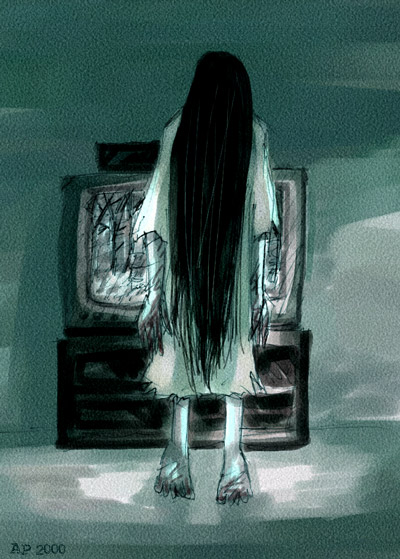
 A blitz of terror warnings
A blitz of terror warnings in the US, coupled with economic and political uncertainty create an atmosphere conducive to the success of such films as
The Grudge, which is doing exceedingly well but
getting mixed
reviews as well as
an anticipated sequel
The difference between the two cultures and worlds almost makes one feel we live in a
Bizarro-world, though.









